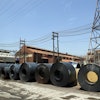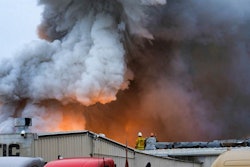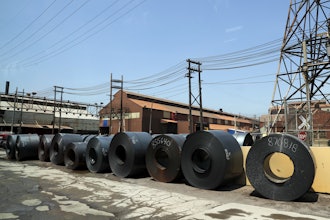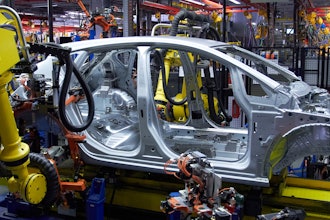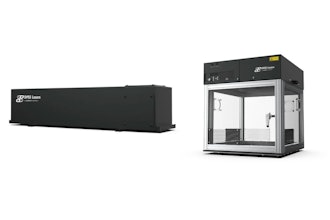Wastewater treatment and heavy metal pollution as a result of industrial activities are significant issues faced by many countries, especially developing ones. When heavy metals, such as arsenic, cadmium, chromium, copper, lead, nickel and zinc, contained in wastewater discharge into rivers and trenches without proper treatment, the result is severe pollution, leading to environmental impacts on aquatic life, plants and ecology. Many heavy metals are biologically accumulated and cannot be easily decomposed, jeopardizing human health through the food chain. Sources of industrial wastewater containing heavy metals include complex organic chemicals, electric power plants, electronics manufacturing, electroplating, iron and steel, and mines and quarries. In this article, I’ll present the currently available chemical methods for removing heavy metals from wastewater, a new method based on recycled LCD glass, and their advantages and disadvantages.
Chemical Oxidation and Advanced Oxidation
Chemical oxidation involves the introduction of an oxidizing agent to the wastewater, causing electrons to move from the oxidant to the pollutants, which undergo structural modification and become less destructive. However, chemical oxidation may produce toxic byproducts. Advanced oxidation, through processes such as steam stripping, air stripping, or activated carbon adsorption, can help remove any toxic byproducts of chemical oxidation. Chemical oxidation and advanced oxidation are always used for the pretreatment of heavy metal wastewater containing organic compounds.
Chemical Precipitation
Chemical precipitation involves adding a precipitation reagent to the wastewater, resulting in a chemical reaction that converts the dissolved metals into solid particles. The particles can then be aggregated by chemical coagulation and removed by filtration or sedimentation. Chemical precipitation is the most common method for removing dissolved heavy metals from wastewater. It is also among the least expensive technologies and is always combined with chemical coagulation for heavy metal wastewater treatment. However, it is not effective for treating wastewater with high acid content, and it produces a large quantity of toxic sludge that needs to be treated with chemical stabilization and disposed of properly.
Chemical Coagulation
Chemical coagulation, which is always used following chemical precipitation, destabilizes fine solid wastewater particles so that they aggregate during chemical flocculation. The particles are normally negatively charged, preventing them from forming larger groups and settling. Chemical coagulation introduces positively charged coagulants that reduce the negative particles’ charge, enabling them to form larger groups. An anionic flocculant introduced to the mixture reacts against the positively charged mixture to bind the particles into larger groups, and can be removed by filtration or sedimentation. Along with chemical precipitation, chemical coagulation is among the least expensive technologies for removal of heavy metals from industrial wastewater. It is not acid-resistant, so it is not appropriate for treating wastewater with high acid content. The sediment also contains heavy metals that must be treated by extra processes such as neutralization or dehydration.
Chemical Stabilization
Chemical stabilization involves treating sludge, a byproduct of chemical precipitation and chemical coagulation, with an oxidant, which decreases the rate of toxic growth within the sludge. The sludge is either incinerated or solidified and then disposed of in landfills.
Ion Exchange
An ion exchange is a chemical reaction in which heavy metal ions from wastewater are exchanged for a similarly charged ion attached to a solid particle. The solid ion exchange particles are either naturally occurring inorganic zeolites or synthetically produced organic resins. There is a maximum quantity of exchanges due to a distinct number of mobile ion sites per unit of resin. The reusability of the adsorbed metal is high with ion exchange. However, ion exchange is the most expensive technology in this article, at more than $3 USD per ton of wastewater containing 100 parts per million (ppm) of heavy metals. This method is also limited by the matrix of the wastewater with high acid levels and high concentration of heavy metal ions, thus requiring pretreatment before the process.
Waste LCD panel glass
Waste LCD panel glass is a kind of alkaline earth boro-aluminosilicate with stable composition and high purity. Every year, about 600 metric tons of LCD panels are discarded in Taiwan. The waste LCD panels are buried in landfills, creating an enormous burden on the environment. ITRI, in cooperation with Taiwan’s Environmental Protection Administration, applied a unique technique to transform it into a novel type of heavy metal adsorbent, the Green Glass Adsorbent Technology, increasing its reuse value significantly. The production process to create green glass adsorbent from waste LCD panel glass involves crushing, extraction, blending, purification, reusing, leaching, concentration, and transformation.
Due to the large amount of microporous material, high surface area and asymmetric charges and reactive sites, the green glass adsorbent is able to adsorb heavy metal by specific mechanisms such as nanometer porous absorption, ion exchange and electrostatic charge attraction. Therefore, the green glass adsorbent can be used to treat wastewater containing heavy metal ions with a concentration ranging from sub-ppm to %.
The glass structure is retained on purpose during the transformation process, so the green glass adsorbent can work with acids and chemicals and can even be used to treat wastewater in a low pH medium (equating to 0) to accomplish effective absorbing goals. As a result, the use criteria are wider and the scope is broader for the green glass adsorbent as compared to the various metal ion adsorbents or ion exchange resins used currently.
Waste LCD panel glass as a raw material is low cost and the transformation process cost is also low. Furthermore, applying the green glass adsorbent to treat wastewaters is simple; it is added directly into wastewater to adsorb heavy metal without pretreatment, produces no toxic byproducts, and it is easy to be regenerated for reuse.
We are fortunate to have many approaches for removing heavy metals from wastewater. Each organization needs to consider the above alternatives and select the best approach based upon its needs and regulatory requirements.
Dr. Huan-I Hung joined Taiwan’s Industrial Technology Research Institute (ITRI) in 1998. He is now the deputy director of the Applied Chemistry Division at ITRI’s Material and Chemical Research Laboratories.

